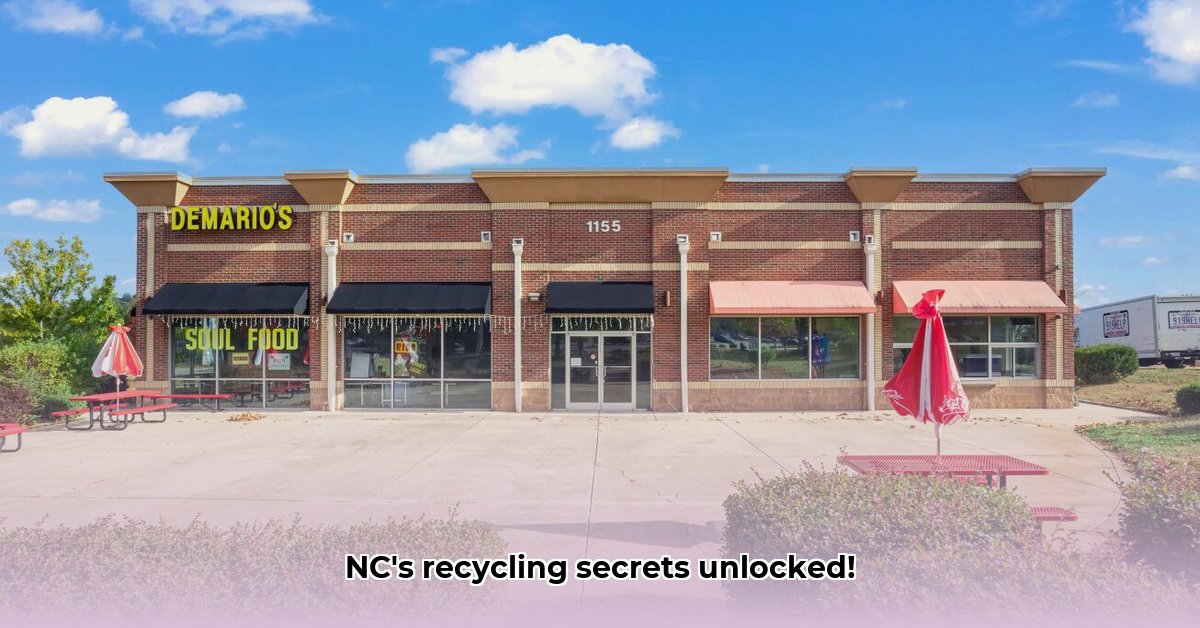
TT&E Iron & Metal: A Case Study in Sustainable Scrap Metal Recycling
TT&E Iron & Metal, located in Garner, North Carolina, stands as a model of efficient and environmentally responsible scrap metal recycling. This case study examines TT&E's operations, highlighting its successes, challenges, and potential for future growth, offering actionable insights for businesses and policymakers alike. The company's approach offers a compelling example of how technological innovation and a commitment to sustainability can transform a traditionally resource-intensive industry.
A High-Tech Approach to Recycling Efficiency
TT&E's success stems from its adoption of cutting-edge technology. Unlike traditional scrap yards, TT&E utilizes computerized scales and sophisticated software to precisely track and manage its operations. This technological integration streamlines the sorting and processing of scrap metal, resulting in faster transactions for customers and optimized resource utilization. The precision allows for maximum material recovery and minimizes handling costs, leading to increased efficiency and profitability. This approach not only improves business outcomes but also reduces the environmental impact associated with unnecessary material handling. How much faster are their transactions compared to traditional methods? Further data on this aspect would strengthen the case study.
Environmental Impact: Quantifying Sustainability
TT&E's operations demonstrably contribute to environmental sustainability. By diverting millions of pounds of metal from landfills annually, the company reduces the need for resource-intensive mining and minimizes landfill overflow. While precise figures on CO2 emission reductions and landfill space saved are currently unavailable, the potential environmental benefits are substantial. This highlights the need for future data collection to quantify the full environmental impact and showcase the extent of TT&E's contribution to a cleaner environment. What specific initiatives could help quantify the environmental benefits more accurately?
Market Reach and Community Engagement: Expanding Influence
TT&E's service area extends beyond Garner, encompassing major North Carolina cities such as Raleigh and Durham. Established for nearly 50 years, the company has cultivated a strong reputation based on fair pricing and trustworthy service. This enduring trust fosters customer loyalty, further enhancing their recycling volume and positive environmental impact. Given their success, how could TT&E expand its reach further, and what strategies could boost its market share within North Carolina?
Growth and Future Opportunities: Scaling Sustainable Success
TT&E's success prompts consideration of future expansion and growth strategies. A detailed financial analysis, including profitability metrics and operational cost breakdowns, would provide valuable insights into their growth potential. Strategic partnerships, such as collaborations with local governments or other businesses, could significantly expand TT&E’s reach and influence. What financial incentives could encourage local governments to support sustainable initiatives, and how could these partnerships be structured for mutual benefit?
Collaborative Strategies for Sustainable Growth
TT&E's continued success hinges on effective collaboration across multiple stakeholders:
TT&E: Prioritize precise environmental impact tracking and continual refinement of operational efficiency. Invest in R&D and explore innovative recycling technologies; pursue strategic partnerships.
Local Governments: Offer financial incentives such as tax breaks, streamline permitting processes, integrate scrap metal recycling into municipal waste management, and launch public awareness campaigns.
Businesses: Select TT&E as their preferred scrap metal recycler and prioritize sourcing recycled metal. Promote their commitment to environmental responsibility and publically advocate for the use of recycled materials.
Consumers: Choose environmentally responsible recycling options like TT&E and encourage businesses to adopt sustainable practices. Advocate for increased use of recycled materials in consumer products.
Navigating Challenges and Mitigating Risks
Despite its successes, TT&E faces several challenges:
Fluctuating Metal Prices: Mitigate this risk by diversifying their customer base, exploring hedging strategies, and securing long-term contracts.
Increasing Transportation Costs: Optimize delivery routes and explore partnerships with local haulers to reduce costs.
Environmental Regulations: Maintain proactive compliance and engage environmental consultants to ensure regulatory adherence.
Competition: Enhance customer service and highlight TT&E's commitment to sustainability to gain competitive advantage.
The Importance of Data-Driven Decision Making
To fully comprehend TT&E's impact, comprehensive data collection is crucial. This includes precise environmental metrics (CO2 reduction, landfill space saved), detailed financial information (profit margins, operational costs), and customer feedback. This data will provide a holistic picture of their success, allowing for more effective future planning and strategic decision-making. How can TT&E best utilize data analytics to optimize its operations and further enhance its sustainability efforts? The answer lies in investing in a robust data management system and analyzing the data to identify areas for improvement.
Conclusion: A Model for Sustainable Recycling
TT&E Iron & Metal serves as an exceptional example of how technological innovation and a commitment to sustainability can transform a traditional industry. By embracing a data-driven approach, fostering collaboration, and proactively addressing challenges, TT&E can continue to lead the way in environmentally responsible scrap metal recycling for years to come. Their success highlights the significant potential for environmental and economic benefits when businesses actively prioritize sustainable practices.